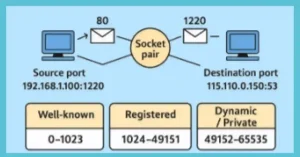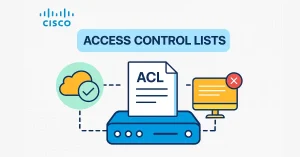EIGRP uses a protocol-dependent module (PDM) for routing with several different protocols including IPv4 and IPv6. EIGRP also used PDMs to route Novell’s IPX and Apple Computer’s AppleTalk network-layer protocols. The protocol-dependent module (PDM) is also responsible for carrying information from the routing table to the topology table.
protocol-dependent module (PDM) is also responsible for network layer protocol-specific tasks. For example, the EIGRP module that is responsible for sending and receiving EIGRP packets encapsulated in IPv4 is also responsible for analyzing EIGRP packets and informing DUAL about the new information that is received. DUAL makes routing decisions on the received information and stored the result in the IPv4 routing table.
The responsibilities of the protocol-dependent module (PDM) are:-
- Maintaining the neighbour table including topology tables of EIGRP enabled routers belonging to the protocol suite
- Building a protocol-specific packet and translate the packet for Diffusing Update Algorithm (DUAL)
- Interfacing Diffusing Update Algorithm (DUAL) to the protocol-specific routing table
- Determine the metric and transient this information to Diffusing Update Algorithm (DUAL)
- Implementing filtering and accessing lists
- Carry out redistribution functions to and from other routing protocols
- Redistributing routes that are learned by other routing protocols
- Send and receive EIGRP packets that allow IP data.
When a router discovers a new neighbour, it saves the address and receiving interface as an entry in the neighbour table. One neighbour table is maintaining for each protocol-dependent module (PDM), such as a neighbour table for IPv4 and neighbour table for IPv6.
EIGRP protocol also maintains a topology table both for IPv4 and IPv6. The topology table consists of all destinations that are advertised by neighbouring routers and also has a separate topology table for each protocol-dependent module (PDM).





